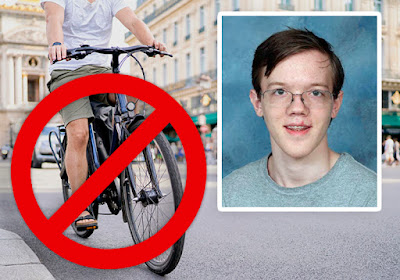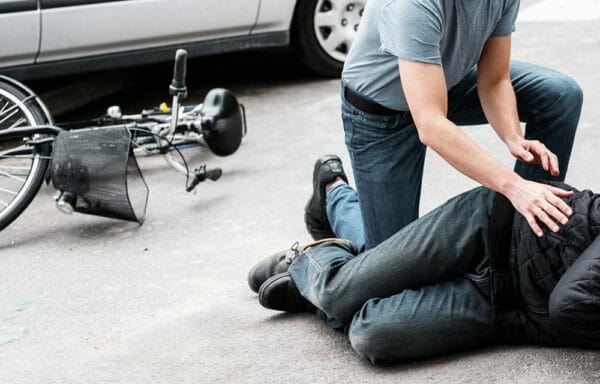Lighter and fluffier than cotton candy, thin high clouds wisped over beaches not yet crowded with weekend throngs. Those clouds didn’t obscure the sun or sky; rather, they highlighted the almost preternaturally refulgent expanse crowning the unusually calm and blue waters.
If that sounds like a perfect day for a bike ride, your hearing (so to speak, pun intended) is true. And ride I did, on Dee-Lilah, my Mercian Vincitore Special. What better ride than the beautiful bespoke bike I gave myself as a gift on my most recent round-number birthday?
Oh, and the ride could not have gone better. I pedaled into wind (from the southeast, apparently) that at times “gusted” to 20 KPH (12 MPH) to Point Lookout and let that same wind assist my ride along the ocean to Coney Island and along the Verrazano Narrows, passing under the eponymous bridge, into the Brooklyn neighborhoods of Bay Ridge, Sunset Park and Park Slope to Barclays Center, where I hopped on the D train home after a ride of about 145 kilometers (90 miles).
Even with my best planning (which may not be saying much) I could hardly have had a better ride. Yet…
Nothing could have done more than that ride to make me wish I were still in Japan, particularly in Kyoto. Although the weather was great, I felt good and Dee-Lilah practically sang under me, there is so much I miss already about cycling, and simply being, in the Land of the Rising Sun.
What I am feeling is not the same sort of yearning to be somewhere else I felt through my childhood and early adult life: When I was in high school, I dreamed of going to college, getting a job or doing almost anything else to get out of that school, that town, that state. Then I went to Rutgers where, I can say without exaggeration, everybody—students, faculty, staff—wanted to be somewhere else.(Some years back, someone did a survey to determine which college or university had the most unhappy students. Supposedly, Rutgers came in second, behind Brandeis.) And I had a series of jobs where I wanted to be somewhere else, doing something else.
But my current longing has nothing to do with youthful wanderlust or unresolved psychological issues. Rather, it has to do with having experienced a place where order doesn’t seem like an imposition. Instead, it’s what makes the place beautiful and vibrant—and safe to ride. Drivers aren’t using bike lanes for passing or parking (or, worse, picking up and discharging passengers); I never felt that any driver could kill me if they lost their patience.
For that matter, I never worried that the person standing on line in Family Mart or Lawson would pull out a gun if they were having a bad day. Or that bumping into someone could lead to a fight. (I was amazed how infrequently people bumped into each other, even on crowded streets in the Ginza district.) Of course, that has to do with being in a country with real firearms regulation. I believe, however, it also has to do with something woven through the culture.
It was remarkable, to me, that I sensed so little aggression, even among Tokyo business and tech people,who are in just as much of a hurry as their New York counterparts. Whether I rode or walked, I never had the sense that anyone was trying to push me out of the way. Whenever I crossed an intersection, turning cars stopped, even if they had the same green light I had.
Speaking of public spaces: The dirtiest I saw—a stretch near Doutonbori in Osaka—wasn’t as grimy or smelly as most public spaces in New York. People don’t use bike lanes or streets or train stations as trash receptacles or toilets.
Even though I still have, I believe, a bit of my youthful rebellious streak, I found myself loving the order I saw in public spaces and the consideration people give each other. I am reminded of my first trip to Europe, just after I graduated Rutgers: For all that I professed to hating rules and formality, I really liked entering shops, bakeries, museums or any other public venue, and being greeted with, and greeting whoever worked there, with a light, almost sing-songy “bonjour” and that French, Italian and other European meals had their own protocols and rituals, from what is consumed when (and with what). Part of my love, of course, came simply from being truly away from home (I traveled by myself, on my bike). But I also sensed people’s appreciation for the things, however small, that made them who they are, as individuals and a society.
I felt that sense on an even deeper level in Japan. Of course, because my stay wasn’t very long, I might be mis-perceiving it. Whatever the case, the general ease I felt in a culture completely unlike any other I’ve known, where I don’t speak the language (I at least knew some some school French and Spanish, and some very situational Italian, when I first went to Europe) made some sense to me after enjoying the gardens and visiting the temples, shrines, castles and other monuments.
 |
| The Gion district. |
In an earlier post, I mentioned the Nijo Castle in Kyoto, where I learned about the Samurai codes of honor which, I believe, influence Japanese social morés. Interestingly, another experience in Kyoto revealed something about the ways people interact with each other and their surroundings: a visit to Gion, the “Geisha district “ of Kyoto, where I saw geishas on the street and saw a geisha show. There, I learned that, contrary to a common misperception, they are not prostitutes or concubines, but are rather like cultural ambassadors: They are trained performance artists who dance, sing, have conversations and otherwise provide an elegant atmosphere for visiting dignitaries and guests at banquets and other events. The young women chosen for this profession undergo a process of training and acculturation as lengthy and rigorous as for just about any other profession you can think of. Oh, and while they are maikos—geishas in training—they basically have no contact with their families or anyone outside their okiya (Geisha house), which is strictly controlled by a kind of house mother.
Oh, and they’re not allowed to have cell phones. Can you imagine any young American signing up for that? And, as long as they’re geishas, they’re not allowed to marry or have boyfriends. They’re “married to the profession.” Hmm…Maybe that has something to do with how diligent Japanese oil people seem to be about their work.
Another insight into what I experienced in Japan came during a visit to the Nonomiya Shrine. One of the exhibits mentioned that in ancient Japanese mythology, all things—even inanimate objects—have souls. I doubt any Japanese person believes that today. But knowing that such a belief was foundational to Japanese culture, I couldn’t help but to wonder whether that is a reason why the Japanese seem to take such good care of everything and keep public spaces so clean.
Or why none of their bike lanes are like the one on 4th Avenue in Sunset Park, Brooklyn—one of the worst in New York, if not all of the United States.
I want to go back to Japan—because of one of the best bike rides I’ve had in New York, not because of youthful wanderlust.





















